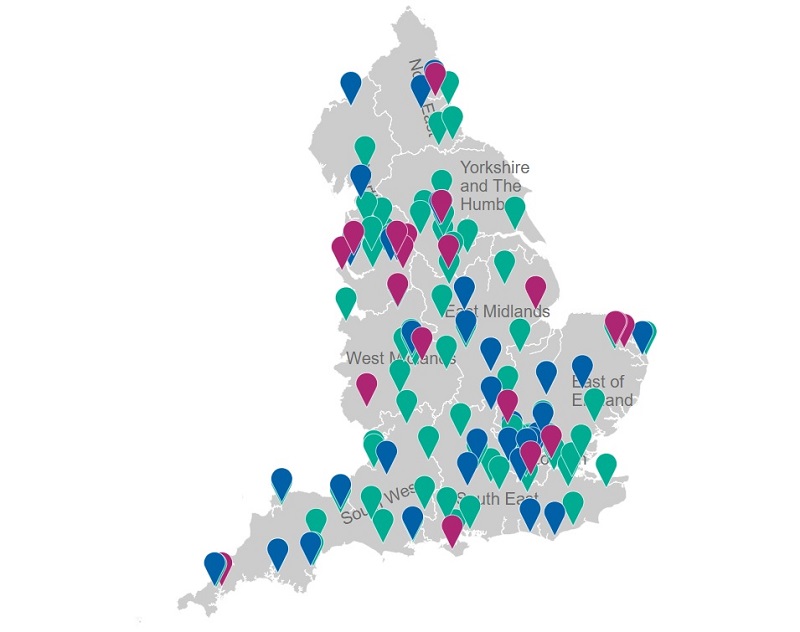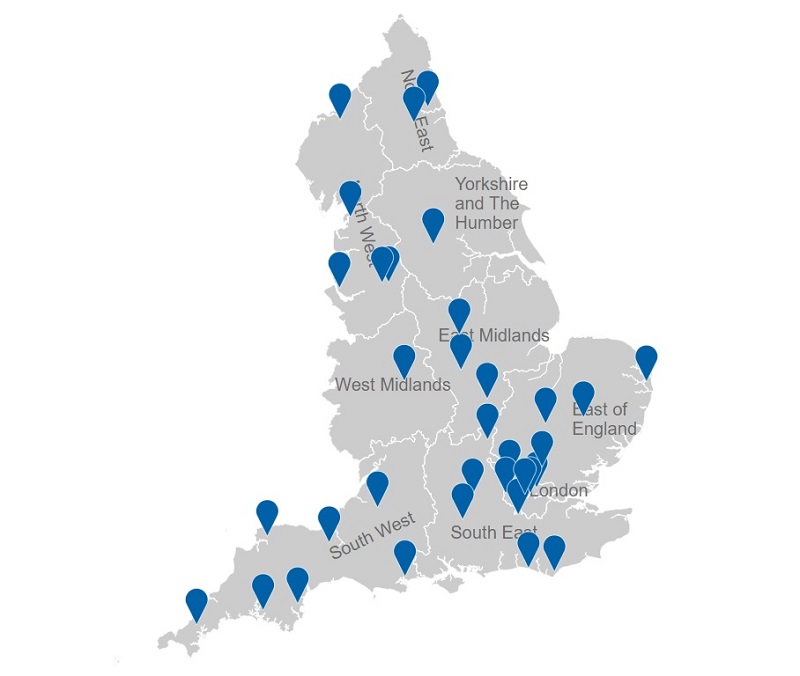The Government has insisted that plans to build 48 ‘new’ hospitals by 2030 will still go ahead, despite widespread concerns over timelines and increasing construction costs.
In its 2019 manifesto, the Conservative Party announced the New Hospitals Programme, a pledge to build 48 new hospitals across the country, including eight schemes that had been announced by previous governments.
However, since then, the number has been seemingly interchangeable, with the Government, in a response to questions from BBH, referring to just 40 developments in total, even though the GM Government website clearly mentions 48.
And, to date, just two of those projects have been completed, while only five others are under construction.
The remaining schemes are still in the planning or approval stages, and this, combined with rising inflation and construction costs and a shortage of building materials, has led to concerns that they will not go ahead.
Connecting the country
But, in last week’s Autumn Budget, the first from new Chancellor, Jeremy Hunt; the Government announced an extra £3.3billion for NHS services over the next two years as well as a ‘slight increase’ in capital spending.
We are taking action to speed up the construction of hospital sites, including spending time developing designs that can be shared across projects, preparing the construction industry for works, and building hospitals simultaneously
And Hunt said the New Hospitals Programme would go ahead, telling ministers: “Smart countries build on their long-term commitments rather than discard them. So, today I confirm that because of this decision, alongside Sizewell C, we will deliver the core Northern Powerhouse Rail; HS2 to Manchester; East West Rail, the New Hospitals Programme, and gigabit broadband rollout.
“All these and more will be funded as promised, with over £600billion of investment over the next five years to connect our country and grow our economy.”
Developing designs
In response to further questions from BBH editor, Jo Makosinski, a spokesman for the Department of Health and Social Care (DHSC) spokesperson added: “We are committed to delivering 40 new hospitals by 2030, backed by an initial £3.7billion, which will be the biggest hospital building programme in a generation and ensure a stronger future for the NHS.
“We are taking action to speed up the construction of hospital sites, including spending time developing designs that can be shared across projects, preparing the construction industry for works, and building hospitals simultaneously.”
The pledge to push ahead with the scheme comes after it was announced on 2 July that the National Audit Office (NAO) is set to hold a ‘value for money review’ of the programme with the watchdog’s comptroller and auditor general, Gareth Davies, allegedly telling the Observer there were concerns over budgets, delays, and the definition of ‘new hospital’.
Defining ‘new’
Confusion over what constitutes a ‘new hospital’ has been rife in recent months, with the majority of projects appearing to be replacements for existing hospitals, new wings, or refurbishments.
In guidance sent to NHS trusts by the Department of Health and Social Care last year, a new hospital was defined as any one of the following:
- A whole new hospital site on a new site or current NHS land (either a single service or consolidation of services on a new site)
- A major new clinical building on an existing site or a new wing of an existing hospital (provided it contains a whole clinical service, such as maternity or children’s services)
- A major refurbishment and alteration of all but the building frame or main structure, delivering a significant extension to useful life which includes major or visible changes to the external structure
The guidance also stresses that while the projects ‘vary across a number of factors’, each ‘must always be referred to as a new hospital’.
This graph, taken from the HM Government website shows the spread of the projects covered by the programme. Blue are 'new hospital builds', red are 'hospital upgrades', and green are described as 'equipment or technology' upgrades
During Prime Minister’s Questions on 8 June this year, Labour leader, Sir Keir Starmer, described the plan as ‘paint jobs and fix-ups, pretending that is the same as building new hospitals’.
This was denied by Mr Johnson at the time, who insisted at the time ‘what we are doing instead is building 48 new hospitals’.
And Nuffield Trust chief executive, Nigel Edwards, said of the confusion: “The definitions used in this programme are not very clear.
These types of projects are very welcome, given the UK’s huge underinvestment in health infrastructure compared with other high-income countries, but it is inaccurate to say that 40 entirely-new hospitals are being built
“There is a substantial amount of new hospital building, but only two of the projects are new general hospitals on new sites.
“The rest are a combination of substantial rebuilds, new wings, and a range of major developments.
“These types of projects are very welcome, given the UK’s huge underinvestment in health infrastructure compared with other high-income countries, but it is inaccurate to say that 40 entirely-new hospitals are being built.”
In a state of limbo
One NHS trust estates lead, who asked not to be named, told BBH: “We have absolutely no idea when and if our project will go ahead.
“We are not being given firm timelines and our requests for information are not responded to.
“In the meantime, like many other NHS trusts across the country, we are struggling with buildings which are unfit for purpose and require significant maintenance.
“If the new hospital does not go ahead as planned, we will have wasted several years when we could have been improving the buildings or planning alternative solutions.”
This is a common concern among industry leaders, with architects and construction companies also in limbo when it comes to progressing schemes.
One architect said: “We have spent a lot of time, and the Government has spent a lot of money, working on business cases for these developments, but still we do not know when they will be going ahead.
If the new hospital does not go ahead as planned, we will have wasted several years when we could have been improving the buildings or planning alternative solutions
“While the Government is mandating the use of modern methods of construction to deliver new public infrastructure projects, in reality when developing new hospitals, traditional approaches are often the only feasible solution. And to deliver these new hospitals by 2030 – less than eight years away – is a feat I am not sure can be realised.
“If they do not get signed off soon, I do not see how they will be delivered on time.”
The blue markers show apparent 'new hospital projects' which will be delivered under the scheme
A package of support
In its reply to BBH’s questions this week, the DHSC spokesman confirmed there were 40 schemes being delivered – not 48 – and that this included 32 ‘new hospital schemes’ as well as the eight previously agreed.
On its current progress, he added: “Five of the hospital schemes are currently in construction and two are complete.
“A package of support is being provided to all the hospital schemes in the programme to support business case development and streamline approvals.
“The programmatic approach also allows us to learn lessons from previous, less-successful, construction schemes and ensure that these lessons are built in from the outset to avoid time delays and costs overruns as the scheme progresses.
“By standardising the parts and processes across the programme, and being transparent with our supply pipeline about our needs, we’ll be able to work more collaboratively with the industry to ensure we have the right parts when we need them.”
What do you think about the programme? Contact jom@hpcimedia.com with your views.
